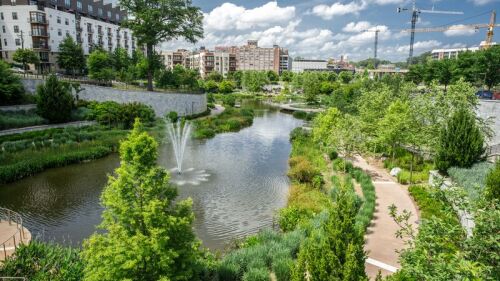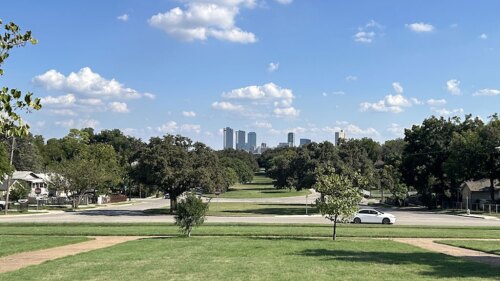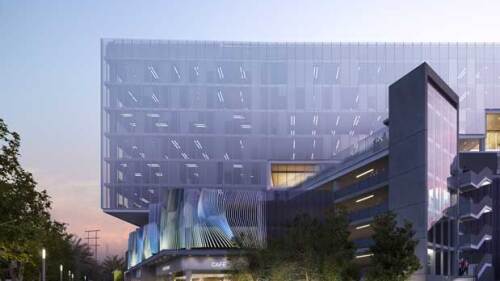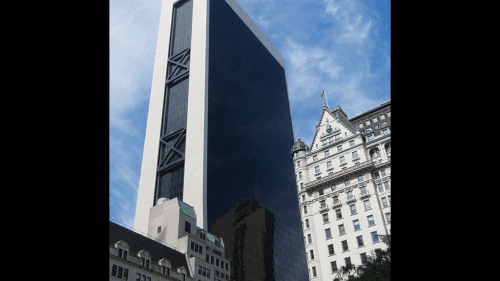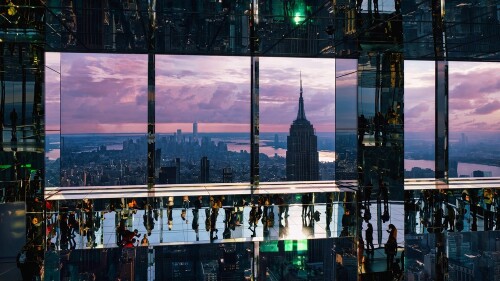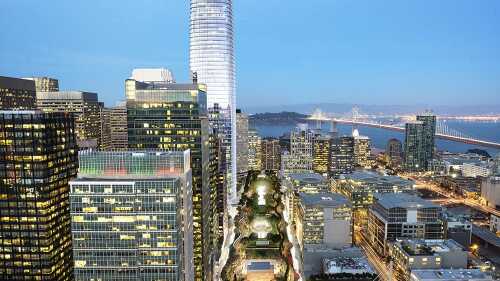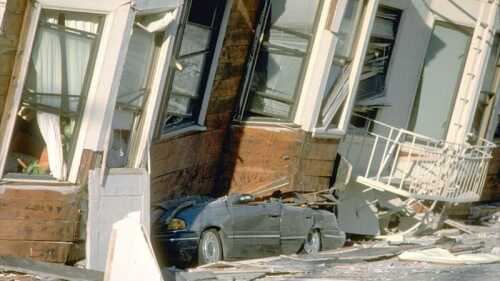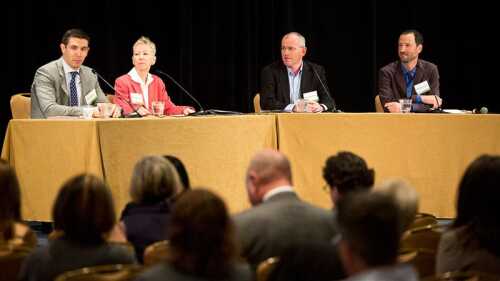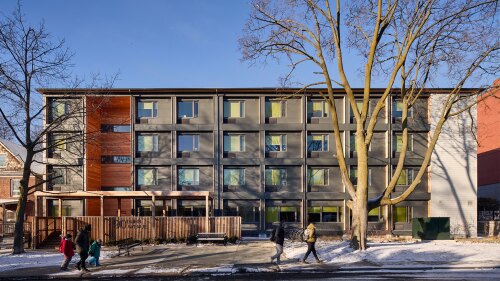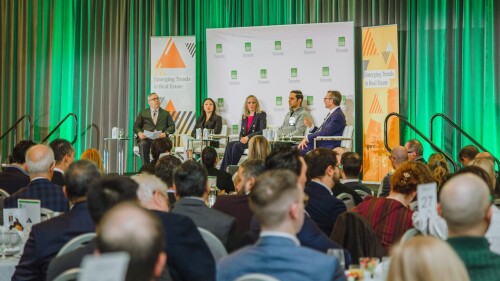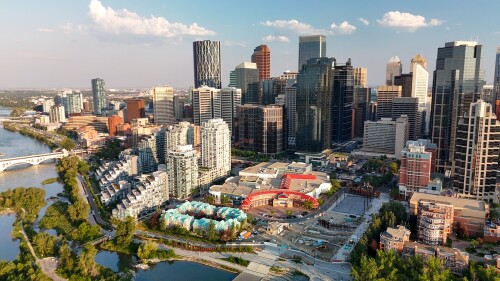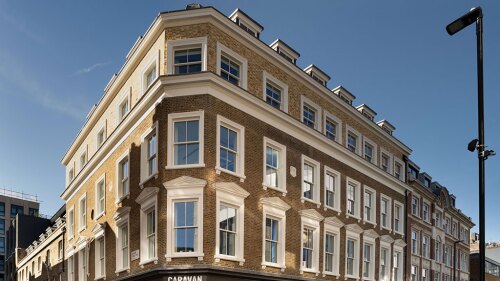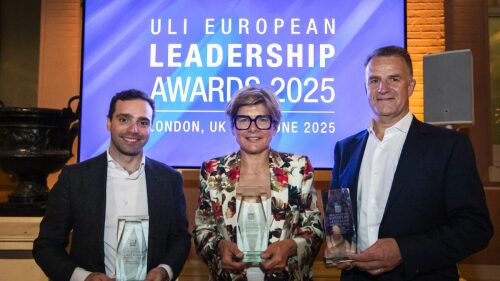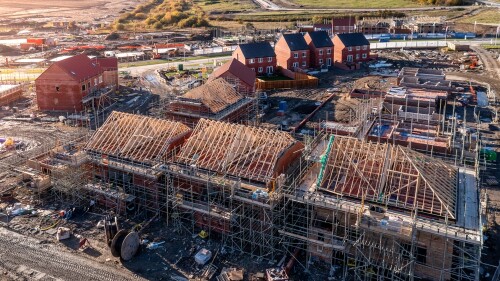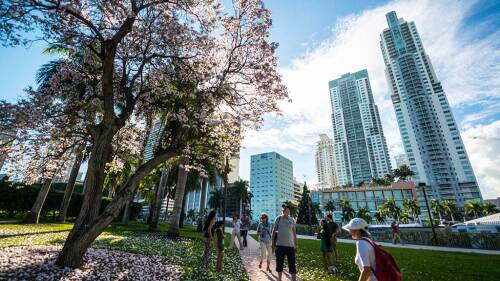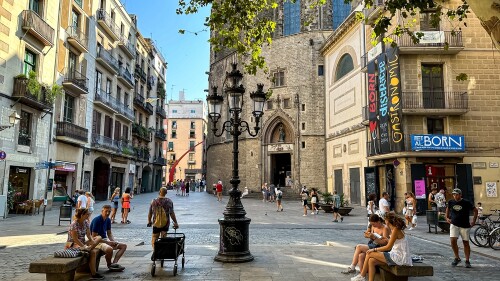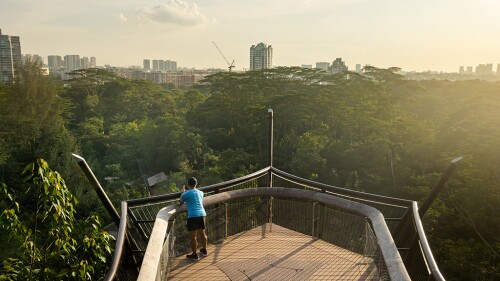Markets
Chicago
Chicago’s Aqua Tower is an 82-story concrete structure with more than 1.9 million square feet (176,500 sq m); tenth-tallest building in Chicago. Rated LEED-NC (for new construction) under the Leadership in Energy and Environmental Design program of the U.S. Green Building Council. Construction cost is estimated at $300 million per GreenSource magazine.
Ideally, mixed-use projects achieve some kind of symbiosis among their elements, creating a whole that is more than the sum of the parts. All completed in the past five years, the following ten projects represent innovative takes on combining product types.
As cities become denser, the cost of high-density parking begins to pencil out for developers—which is when the development of parking that automatically stores and retrieves cars becomes attractive.
Dallas
Since the 1980s, the Dallas suburb of Plano has attracted some of the country’s biggest corporate headquarters and established itself as a hub for major employers. But how did Plano revamp to meet the goals of a changing economy and a changing community? The city made a pivot that has been echoed in growing cities around the country: a major shift toward investing in parks and activating green space.
A team of ULI experts visited Fort Worth in September 2024 to develop anti-displacement strategies for the city’s historic, majority Hispanic Northside neighborhood, which faces mounting pressure from two nearby megadevelopments, as well as broader metropolitan growth trends that drove up the area’s property values 60 percent from 2016 to 2021.
From resilient parks to bold adaptive reuse, this year’s winners redefine urban innovation and community impact across the Americas
Los Angeles
The ULI/Allen Matkins Capital Markets Roundtable, now in its eighth year, brings together investors, developers, lenders, managers, and intermediaries to share insights and perspectives on the current and future outlook for real estate capital markets. topics discussed included which sectors of the market are strong, which should be avoided; and what the thoughts and strategies of some major players in real estate financing and investing are for the coming year.
With a goal of helping lure people back to the office in light of the post-pandemic work environment, Los Angeles-based real estate investment firm Coretrust Capital Partners is showcasing new technology which creates a safe and inviting workplace in an historic building.
Hotels and office buildings are taking on many of each other’s characteristics in terms of design and use. This confluence has several drivers, among them the evolution of technology, shifts in guest and tenant expectations, and the increasing mobility of the American workforce.
New York City
Tattooed, tanned, and tousled, 48-year-old Stefan Quinn Soloviev looks like an athletic nerd who stepped out of a Mad Max film, but don’t let his appearance fool you. Soloviev is one of the largest landowners in the United States—number 21, according to Landreport.com—with a portfolio that includes some of Manhattan’s most coveted properties.
Construction codes are pushing new buildings toward net zero, but roughly 80 percent of the expected 2050 building stock already exists today and needs to undertake major upgrades to meet emissions limits in line with the Paris Agreement. To address this issue, cities and states across the U.S. have started to limit emissions from existing buildings with regulations known as Building Performance Standards (BPS).
Holcim Foundation is equipping the next generation of building practitioners to become impactful voices of change.
San Francisco
How public and private interests combined forces to overhaul the transit hub, now home to San Francisco’s tallest building, Salesforce Tower.
Could San Francisco’s landlords finance badly needed earthquake retrofits by converting garages into “granny flats” while also adding badly needed affordable housing?
As cities develop resilience strategies in anticipation of more frequent and severe weather events triggered by climate change, understanding what success looks like across a broad spectrum of indicators will be critical to their efforts, said panelists at a ULI conference.
Toronto
Across North America, cities are confronting a housing crisis that demands urgent, innovative responses. In Toronto, the launch of the Rapid Housing Initiative (RHI) in April 2020 marked a pivotal moment—an accelerated effort at the height of the pandemic to deliver safe, stable housing. Since then, unprecedented investments have been made in communities across Ontario to address housing insecurity, reshaping the province’s residential landscape.
Canada’s real estate market is in the midst of a pivotal shift as the Bank of Canada (BoC) rolls back what has been “higher for longer” interest rates. Yet despite welcome relief on financing costs, real estate leaders are still moving somewhat cautiously amid uncertainty and fluid market dynamics.
Obsolete buildings will constitute up to 50 percent of all new housing in cities
London
In the heart of London’s Covent Garden neighborhood, a complex of five Victorian-era structures—previously home to a seed merchant company, a brass and iron foundry, and a Nonconformist chapel, among other uses—have been restored and adapted into a single, cohesive office building with ground-floor retail and dining space. The three-year restoration preserved the property’s industrial heritage, yet it provides enough flexibility to meet the needs of today’s workforce.
The awards celebrate a senior leader, a young professional and a DEI champion
ULI has launched C Change for Housing, a major new pan-European program designed to mobilize the real estate industry around two of society’s most urgent and interconnected challenges: the climate crisis and housing affordability.
Paris
Although ready to commence a new real estate cycle, real estate leaders globally are braced for another challenging year of uncertainty, with lingering inflation, largely driven by factors including geopolitical instability, and persistently higher interest rates in some regions, potentially delaying a hoped-for recovery in capital markets and occupancy metrics. This is according to the Emerging Trends in Real Estate® Global Outlook 2025 from PwC and ULI, which provides an important gauge of global sentiment for investment and development prospects, amalgamating and updating three regional reports which canvassed thousands of real estate leaders across Europe, the United States and Asia Pacific.
The outlook for the European real estate market is cautiously optimistic despite growing geopolitical uncertainty and concerns about economic growth, with London, Madrid, and Paris emerging as the standout performers, according to a new report by PwC and the Institute.
According to the second annual C Change Survey, 93 percent of respondents report incorporating transition risks into their real estate investment decisions, indicating the industry’s growing awareness and commitment to integrate climate-related financial risks into decision-making processes.
Hong Kong
At the 2025 ULI Asia Pacific Summit—May 26–29, in Hong Kong—a panel of Asian economic and geopolitical experts addressed one of today’s most immediate global concerns: the implications of U.S.–China economic decoupling and the broader geopolitical shifts reshaping global trade and investment.
Fourteen developments from across Asia have been named winners of the 2025 ULI Asia Pacific Awards for Excellence, one of the real estate industry’s most prestigious honors. Announced at the 2025 ULI Asia Pacific Summit held in May in Hong Kong, this year’s award winners include projects in Australia, Bangladesh, China, India, Japan, the Philippines, and Singapore.
The creation of public space from unused, underused, or unequally shared linear spaces in urban areas has been happening for a long time. Major reference points in the architectural and planning worlds are Boston’s Emerald Necklace, designed by Frederick Law Olmsted (1878–1896); Freeway Park in Seattle (1972-1976); the Baltimore Inner Harbor (1963–1983); the Promenade Plantée in Paris (1987-1994); and the High Line in New York (2005–2019).
Singapore
A seminar organized by the ULI Singapore NEXT Committee presented attendees with the little-known concept of real estate “tokenization,” or fractional investing/trading, as a potential bridge between private investors and direct ownership. Although not new, tokenization in real estate is a niche market, particularly in Asia Pacific, with Singapore hosting a small number of the specialized digital platforms.
Once the site of an abandoned quarry, Singapore’s Rifle Range Nature Park now serves as a buffer zone protecting one of the island nation’s last primary rainforests, Bukit Timah Nature Reserve, from encroaching development and human activity. Located to the reserve’s south, Rifle Range is Singapore’s first net-positive energy nature park, harvesting more energy than its annual operational requirements.
One of Singapore’s most vibrant districts demonstrates how public/private partnerships and the community can shape the built environment.



